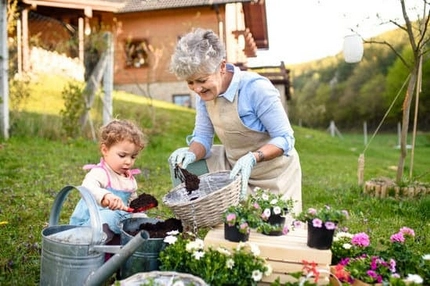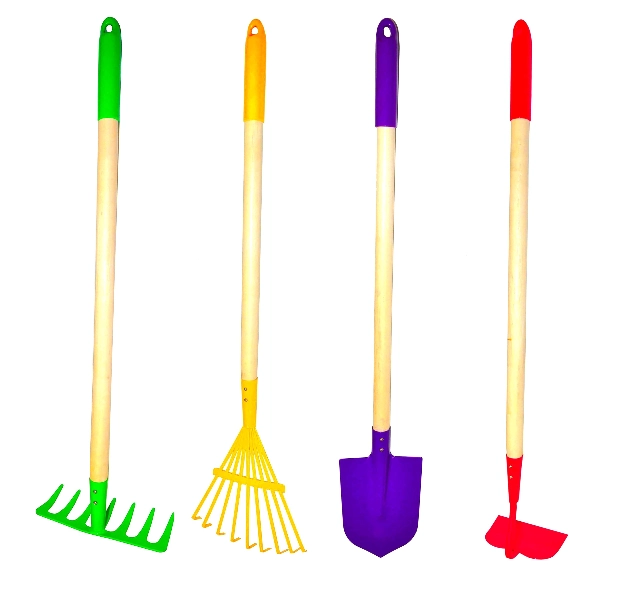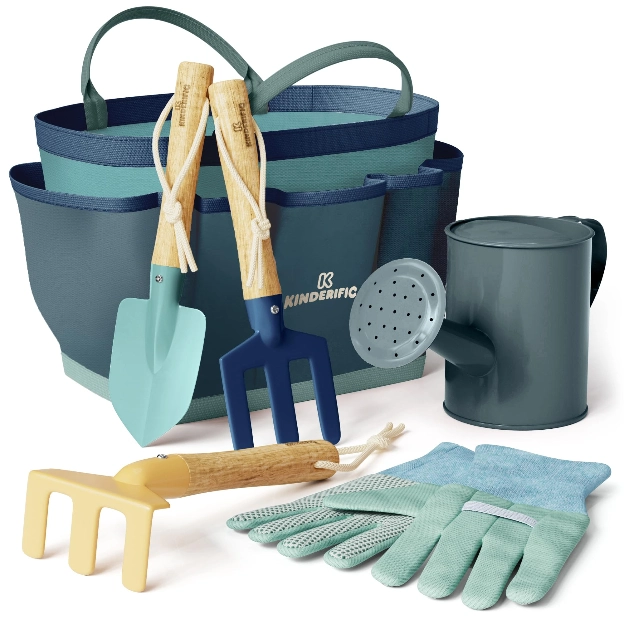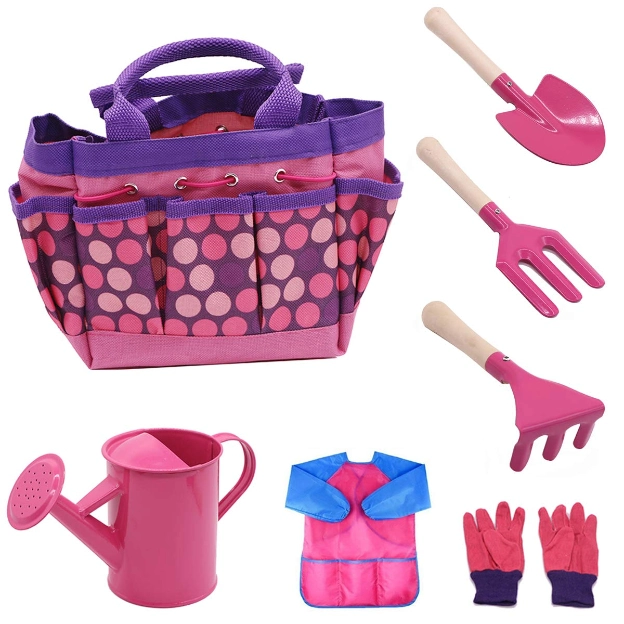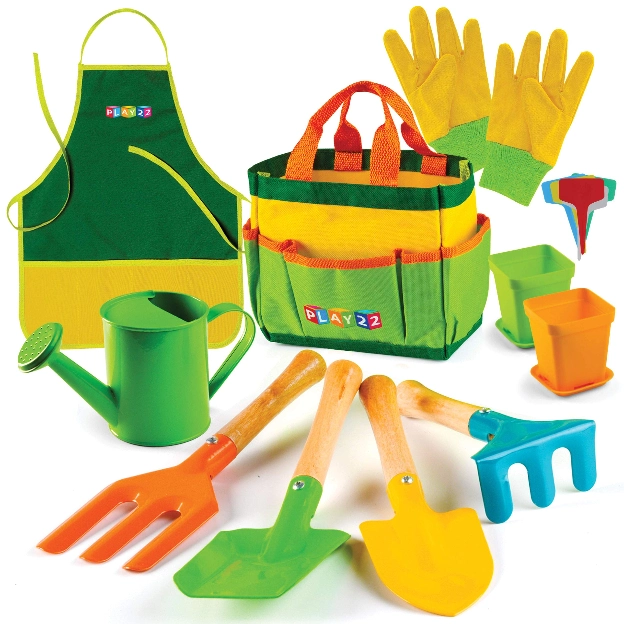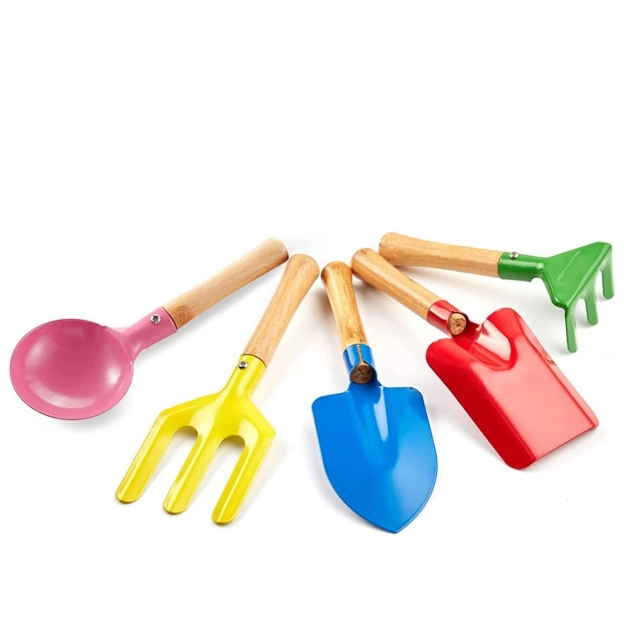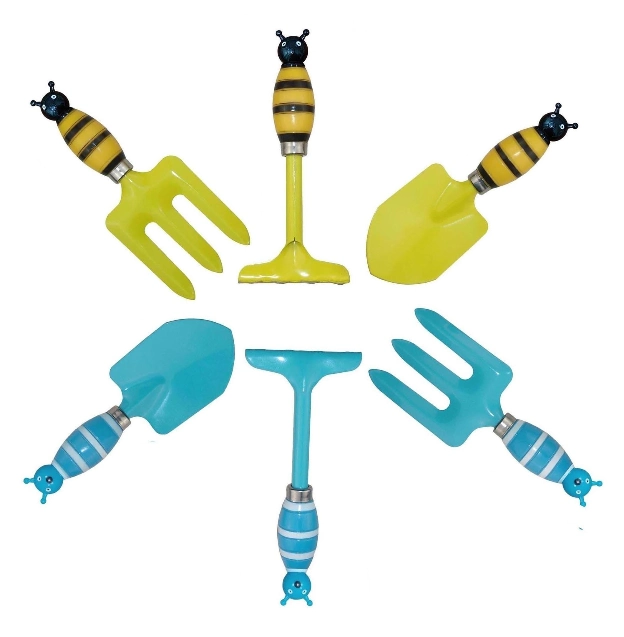Unleash Your Child's Imagination: Discover the Best Garden Ideas for Kids
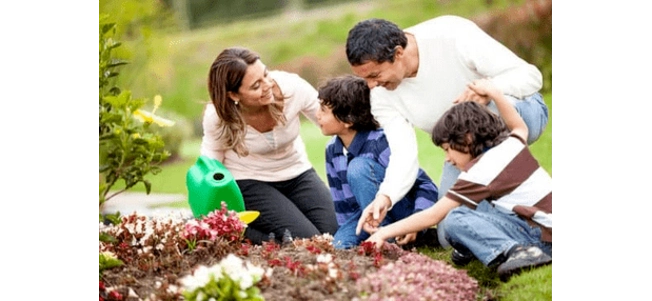
Unleash Your Child's Imagination: Ideas for Kids
Are you looking for ways to spark your child's imagination and get them off their screens? Look no further! In this article, we will explore the best garden ideas for kids that will unleash their creativity and engage their senses.
Imagine the delight on your child's face as they discover a secret fairy garden tucked away in a hidden corner. Or the excitement of growing their fruits and vegetables in a dedicated kids' garden patch.
These garden ideas provide endless hours of entertainment and nurture their love for nature and the environment.
With the right garden setup, your child can turn their backyard into a magical wonderland where they can explore, create, and learn.
There are countless opportunities for imaginative play, from building forts and mini greenhouses to constructing a backyard obstacle course.
So, keep reading if you're ready to transform your outdoor space into a haven for budding explorers and little green thumbs. We have the inspiration and tips to create a garden that will captivate your child's imagination and make lasting memories.
The importance of gardening for kids
Gardening is a fun activity and a profound educational experience for children. It helps them connect with nature, fostering a sense of responsibility and environmental awareness.
When kids plant, nurture, and eventually see seeds grow, they learn about life cycles, ecosystems, and the importance of caring for living things. This hands-on experience is invaluable in fostering an appreciation for nature.
Moreover, gardening allows children to develop critical thinking and problem-solving skills. As they encounter challenges—such as pests, weather changes, or soil quality—they learn to devise solutions, promoting creativity and resilience. This process of trial and error encourages them to think outside the box, an essential skill that can be applied in numerous areas of life, from academics to personal relationships.
Additionally, gardening can serve as a wonderful bonding activity for families. Working together in the garden cultivates teamwork and communication skills among family members. It provides a platform for parents and children to connect, share responsibilities, and create lasting memories. The shared joy of seeing plants flourish and produce fruits or flowers can strengthen family ties and instill a sense of community.
Benefits of gardening for children
The benefits of gardening for children are manifold, encompassing physical, mental, and emotional health. Physically, gardening is an excellent exercise that enhances motor skills and coordination.
Digging, planting, weeding, and watering require various movements that help develop strength and agility. Spending time outdoors also provides essential exposure to sunlight, which is crucial for vitamin D synthesis and overall well-being.
Gardening is a natural stress reliever mentally. Tending to plants can be meditative, allowing children to focus on the present moment and disconnect from distractions.
This mindfulness can lead to improved concentration and emotional regulation. Studies have shown that children who engage in gardening often report lower levels of anxiety and increased feelings of happiness and accomplishment.
Emotionally, gardening fosters a sense of achievement. Watching a seed grow into a thriving plant can boost a child's self-esteem and confidence.
They learn that their efforts yield tangible results, which can be incredibly empowering. This sense of accomplishment can extend beyond gardening, helping children tackle challenges in other areas of their lives with a positive mindset.
Creating a child-friendly garden
Designing a child-friendly garden involves incorporating elements that are safe, engaging, and accessible for kids. Safety should be the top priority; consider using non-toxic plants and natural pest control methods to ensure a healthy environment.
Additionally, create defined paths and clear boundaries to prevent accidents while kids explore their garden space. This can include using stepping stones, mulch, or gravel to mark pathways.
Accessibility is also crucial. Raised garden beds can be particularly beneficial, allowing children to easily reach the soil without bending down excessively. These beds can be built at a comfortable height for children of various ages, making it easier for them to plant, weed, and harvest. Including various plants at different heights can also add visual interest and encourage exploration.
Lastly, creativity should be infused into the garden design. Incorporate whimsical elements like colorful stepping stones, painted pots, or decorative garden stakes. Children can also participate in creating these features, making the process even more engaging. Adding structures like a small trellis, a fairy house, or a cozy reading nook can inspire their imagination and encourage them to spend more time outdoors.
Garden activities for kids
There is no shortage of activities to engage children in the garden. One delightful option is to create a scavenger hunt. Prepare a list of items for them to find, such as specific leaves, flowers, or insects. This activity keeps them entertained and teaches them to observe and appreciate the diversity of life in their garden. They develop critical observational skills and a deeper understanding of their environment as they search for items.
Another fantastic activity is creating art inspired by nature. Children can collect leaves, flowers, and twigs to use in crafts. They might make leaf rubbings or create flower crowns, allowing them to express their creativity while connecting with the natural world. This hands-on approach reinforces the beauty of nature and encourages artistic expression.
Gardening also provides an opportunity to learn about nutrition through cooking. After growing vegetables or herbs, involve your child in preparing a meal. This can include washing, chopping, and cooking the produce they’ve nurtured. Not only does this activity make healthy eating more enjoyable, but it also reinforces the concept of farm-to-table, helping them understand where their food comes from.
Vegetable gardening for kids
Growing vegetables is one of the most rewarding experiences for children. Not only does it teach them about cultivation and responsibility, but it also encourages healthy eating habits. Start with easy-to-grow vegetables like radishes, carrots, or cherry tomatoes. These plants typically germinate quickly, providing a sense of immediate gratification that keeps kids engaged.
Consider creating a themed vegetable garden to make the experience even more exciting. For instance, a pizza garden could include tomatoes, peppers, and basil. This themed concept not only adds an element of fun but also helps children understand the relationship between gardening and cooking. They can visualize the end product, which can be a powerful motivator for their efforts.
Incorporating fun educational components can also enhance vegetable gardening for kids. Use this opportunity to teach them about plant biology, nutrition, and cooking. Discuss the different parts of plants, how they grow, and the nutrients they provide. This knowledge will deepen their understanding and appreciation for the food they eat, encouraging lifelong healthy habits.
Flower Gardening for Kids
Flower gardening is an enchanting way for children to explore their creativity and learn about the beauty of nature. Flowers come in various shapes, sizes, and colors, making them visually appealing and enticing for kids. Starting with easy-to-grow flowers like sunflowers, marigolds, or zinnias can provide instant gratification. These resilient plants attract beneficial insects like butterflies and bees, enhancing the garden's biodiversity.
Creating a cutting garden can add another layer of excitement. Encourage your child to grow flowers specifically for cutting and arranging. This hands-on activity allows them to create beautiful bouquets for family members or to decorate their living space. It instills a sense of pride and accomplishment as they see their creations brighten up the home.
Additionally, flower gardening can serve as an educational experience. Discuss the life cycle of plants, pollination, and the importance of biodiversity. Engage children in journaling their observations, noting changes in the garden over time. This journaling activity can enhance their writing skills while deepening their connection with the natural world.
Fairy Gardens and Magical Spaces
Fairy gardens are a creative and whimsical way to engage children's imaginations. These miniature gardens can be as simple or elaborate as desired, allowing kids to design their own magical landscapes. Use small plants, rocks, and decorative items like tiny houses, fairy figurines, and miniature furniture to create enchanting scenes that spark their creativity.
Involving children in the design process can enhance their ownership of the project. Let them choose the plants, decide on the layout, and select decorative elements. This autonomy fosters a sense of pride and encourages them to express their unique personalities.
Fairy gardens can also serve as a platform for storytelling. Encourage children to invent stories about the fairies that inhabit their garden. They can create adventures, develop characters, and even use the garden as a backdrop for puppet shows or performances. This imaginative play nurtures creativity and enhances their language skills and storytelling abilities.
Sensory Gardens for Children
Sensory gardens are designed to engage all five senses—sight, sound, touch, taste, and smell. Creating a sensory garden can be a delightful project for children, providing them a multi-faceted experience. Start by selecting plants with different textures, such as soft lamb's ear or prickly cacti. Incorporate fragrant herbs like mint or lavender, which can be particularly enticing.
In addition to plants, consider adding elements that stimulate the senses. Wind chimes can introduce sound, while a small water feature can provide soothing audio and a visual focal point. Sand or gravel paths can offer a tactile experience, while colorful flowers and foliage delight the eyes.
Engaging children in the sensory garden can also involve cooking activities, where they can taste the herbs and vegetables they’ve grown.
Discuss different plants' scents and textures, encouraging them to explore and express their preferences. This immersive experience can deepen their connection to nature and enhance sensory awareness, making gardening a holistic activity.
Best Gardening Tools for Kids: Essential Tools to Inspire Young Gardeners
Gardening is a wonderful activity that allows children to connect with nature. It can teach them about responsibility, patience, and the joy of watching things grow.
Kid-friendly gardening tools make it easier and more fun for young gardeners to engage with planting, digging, and watering.
Using the right tools can help kids learn important skills while enjoying their time outdoors.
Safety and size are key factors when choosing gardening tools for kids.
Tools should fit their hands comfortably and be made from non-toxic materials.
Lightweight tools are easier for kids to handle, ensuring they can participate without feeling overwhelmed.
Durability is another consideration; we want tools that can withstand rough play and outdoor conditions.
In the following sections, we will explore various gardening tools designed for kids, helping you pick the best options for your young gardening enthusiasts.
We spent countless hours researching and testing different products to identify the most effective tools that make gardening enjoyable and safe for children.
Best Gardening Tools for Kids
We have put together a list of the best gardening tools for kids. These tools are designed to be safe, fun, and easy to use, making gardening a great activity for young ones.
Whether your child is just starting out or already loves to dig in the dirt, these tools will help make their gardening experience enjoyable.
JustForKids Garden Tool Set
This tool set is a solid choice for kids who want to help in the garden.
Pros
Sturdy metal heads make it durable
Real wood handles are easy for kids to grip
Extra protective caps ensure safety during use
Cons
Best for kids age 7 and up
May be too large for younger children
Adult supervision is recommended
We recently tried out the G & F Products JustForKids Garden Tool Set and were impressed with the quality.
Thanks to solid wood handles and metal heads, each tool feels well-made.
The tools looked bright and colorful, which made them appealing for the kids.
Using them was a fun experience. The kids easily grasped the handles, and the metal heads made digging and raking feel just like real gardening.
We could tell these tools were built to last, as they held up well during our yard work sessions.
The extra protective caps on each tool added peace of mind, especially with younger ones wandering around.
While we loved the set, it’s important to note that the tools are best suited for kids aged 7 and older.
Our younger child found the tools a bit too big to handle comfortably.
For safety, we also kept an eye on the kids while they were playing with the tools.
Overall, this garden tool set is a great option for encouraging kids to get involved in outdoor activities.
Kinderific Gardening Set
This set is great for kids who want to explore gardening in a fun and safe way.
Pros
Tools are lightweight and easy for little hands to handle.
Colorful and child-friendly design grabs attention.
Comes with a handy canvas tote for easy storage.
Cons
Gloves may be a bit large for smaller hands.
Some tools could use a more ergonomic design.
Limited selection of tools for advanced projects.
We enjoyed using the Kinderific Gardening Set with our young gardeners.
The vibrant colors and fun shapes drew our kids in right away.
Each tool feels sturdy even though they're designed for small hands, making them a good fit for toddlers to use safely.
The canvas tote is practical. It keeps everything organized, and kids love carrying their tools around.
We found that the watering can has the right size spout for them, making watering plants simple and enjoyable.
It’s a perfect starter set for children who want to learn the basics of gardening.
While using the gloves, we noticed they might be a bit large for very young ones.
However, they provide some protection while letting kids mimic adult gardeners.
Our kids had a great time digging and planting with these tools, and it was a joy to see their excitement grow as they learned.
MoTrent Kids Gardening Set
This gardening tool set is a solid choice for young kids eager to explore gardening with real tools.
Pros
Lightweight and easy for kids to carry.
Safe materials ensure worry-free play.
Encourages imaginative play and outdoor activity.
Cons
It might be too small for older kids.
Requires adult supervision at all times.
Some parts may have small risks for very young toddlers.
Using the MoTrent Kids Gardening Set has been a fun experience for us.
The tools are well-sized for little hands, which made it easy for our children to dig and plant.
We loved how the set includes a tote bag for storage, keeping everything organized and portable.
The tools have sturdy wooden handles and rounded metal heads, making them safe for kids.
The included kid’s smock was also a hit.
It’s made from waterproof material, so we don’t have to worry about dirt getting on their clothes.
The adjustable fit is great for kids of different sizes, making it a practical addition for future gardening adventures.
Watching the kids get excited about watering plants, it’s clear this set keeps them engaged.
Still, we recommend that parents keep an eye on younger children while they play.
The tools are safe, but it’s essential to monitor their use.
Overall, the MoTrent gardening tools blend fun and education, allowing kids to explore gardening while fostering their creativity.
Play22 Kids Gardening Set
We highly recommend this delightful gardening set for kids. It's a fun way to get children involved in gardening.
Pros
Excellent variety of tools for hands-on learning
Sturdy construction with safe materials
Bright colors that attract kids' attention
Cons
Apron and gloves may be too large for younger children
Some metal parts can raise safety concerns for toddlers
A few items might require adult supervision during use
Getting our hands on the Play22 Kids Gardening Set felt like a joyful experience.
This 12-piece set comes with everything from a trowel to a watering can, all designed specifically for little ones.
The bright colors are appealing, and the tools have splinter-free wooden handles that are easy for small hands to grip.
The tote bag is a great touch, making it easy for kids to carry their tools around.
The set encourages kids to explore nature and learn about gardening, which is a huge plus for us.
Plus, it’s perfect for teaching kids about responsibility and teamwork while caring for plants.
The only downside we've noticed is that the apron and gloves are oversized for smaller kids.
It might take some getting used to, but our children still love wearing them, even if they look silly.
Also, even though the tools are sturdy, supervision is a good idea when young children use them.
Delphinus Kids Gardening Tools Set
These delightful gardening tools are perfect for little hands and encourage outdoor play.
Pros
Bright colors make them appealing to kids.
Sturdy construction using metal and wood ensures long-lasting use.
Safe for children with no sharp edges or heavy parts.
Cons
Might be too small for older kids.
Limited to basic gardening tasks.
Some kids may grow out of them quickly.
After trying out the Delphinus Kids Gardening Tools Set, we were impressed by how well these tools fit into our little gardener's hands.
The vibrant colors definitely caught our attention, making gardening a fun activity.
Each piece is designed for outdoor play, so they're great for use in the garden or in a sandbox.
The tools are made from high-quality metal with robust wooden handles. We found them to be quite durable, which is crucial when kids are involved.
They can dig, rake, and shovel without worrying about breaking the tools during enthusiastic playtime.
These tools are also safe for younger children. There are no sharp edges, so parents can relax while their kids explore the garden.
Overall, we believe this set is a great investment for fostering creativity and a love for nature in children.
MTB Supply Kids Garden Tools
These adorable gardening tools are perfect for kids and great for outdoor play.
Pros
Made of real metal, which adds durability.
Bright colors make them visually appealing to children.
Perfect size to fit comfortably in small hands.
Cons
Handle might be a bit slippery when wet.
Some tools may need adult supervision for proper use.
A few users report that the gloves can be too large for younger kids.
Using the MTB Supply kids' gardening tools was a joy. The set comes with a trowel, rake, and shovel, and all three are bright and cheerful.
The metal construction feels sturdy, and we noticed they held up well to playtime.
Even after some rough use, they didn't show any signs of breaking.
The size of the tools is just right for small hands. Kids can easily grip them without struggling.
It’s great to see little ones excited to dig in the dirt or help with the garden.
They even worked well for building sandcastles at the beach, which added a fun twist to the standard gardening tools.
While the bright colors attract kids, we found the handle might be a little slippery if it gets wet.
It's also wise to monitor younger kids using the tools to ensure their safety.
Egashow Kids Gardening Tools Set
We recommend this garden tools set for kids because it is sturdy, safe, and perfect for learning about gardening.
Pros
Made from high-quality metal and wood, making them durable.
Designed for young hands, ideal for kids aged three and up.
Provides a fun way to spend time outdoors and learn with parents.
Cons
The tools may be smaller than expected for older kids.
More suitable for light gardening tasks rather than heavy-duty use.
Not all tools are sharp, so they may not perform well for adult gardening needs.
Using the Egashow Kids Gardening Tools Set has brought so much joy to our gardening activities with the kids.
The tools feel like real gardening tools but are perfectly sized for small hands.
We noticed how much our children enjoyed digging in the dirt and helping us plant flowers.
The quality stands out because they are not made of flimsy plastic. Instead, the metal parts are solid, and the wooden handles are comfortable.
They seem built to withstand rough play, which is great for energetic young gardeners. We also appreciate that there are no sharp edges, ensuring safety during playtime.
While they perform wonderfully for light gardening tasks, they might not be the best choice for very heavy-duty work.
Using them in our flower beds has been a breeze, but the tools are small enough that older kids might not find them challenging.
Buying Guide
When choosing gardening tools for kids, we should consider several important features.
Safety:
The tools need to be safe for children. Look for items with rounded edges and no sharp parts.
Size:
Tools should be the right size for little hands. This helps kids grip them easily and work comfortably.
Weight:
Lightweight tools are best. Heavy tools can be hard for kids to handle.
Material:
Durable materials ensure the tools last longer. We want options made from strong plastic or lightweight metal.
Design:
Fun colors and designs can make gardening more enjoyable. Kid-friendly styles can spark interest in gardening.
Versatility:
Consider tools that can serve multiple purposes. This allows kids to explore different gardening tasks.
Storage:
Look for options that come with storage solutions or are easy to store. This encourages kids to put the tools away properly.
Quick Checklist
Feature | Importance |
|---|---|
Safety | Ensure no sharp edges |
Size | Fits in children's hands |
Weight | Lightweight for easy use |
Material | Durable for long-lasting use |
Design | Attractive and fun for kids |
Versatility | Can be used for various gardening tasks |
Storage | Easy to put away |
Frequently Asked Questions
We often hear questions about the best gardening tools for kids. Below are some common inquiries that can help guide our choices.
What are the safest gardening tools for toddlers to use?
For toddlers, we recommend tools made from lightweight materials. Soft-edged tools, like plastic trowels and small rakes, ensure safety. Look for tools with handles designed for easy grip to help prevent dropping.
Which gardening tools are most suitable for children around 10 years old?
For kids around 10 years old, we suggest small hand tools such as spades, hoes, and pruning shears. These tools can be slightly heavier and sturdier. They allow children to learn more about gardening while still being age-appropriate.
Can you recommend durable garden tools designed for children?
Durable garden tools for kids should be made from sturdy materials. Tools with metal heads and wooden handles typically last longer. Brands that focus on children's gardening often have a selection built tough for active use.
What materials are commonly used in making kids' gardening tools?
Kids' gardening tools are usually made from plastic, metal, and wood. Plastic tools are light and safe for younger children. Metal tools provide durability and function but should be used under supervision.
Which garden tools are essential for introducing gardening to children?
Basic tools like a trowel, watering can, and hand rake are essential when introducing gardening. These tools help kids learn to plant, water, and care for their gardens. Starting with these items creates a solid foundation for future gardening.
How should I select gardening tool sets for kids?
When selecting gardening tool sets, consider the age and size of the child.
Ensure the tools are lightweight and easy to hold.
Look for sets including various tools to encourage exploration and learning in gardening.


